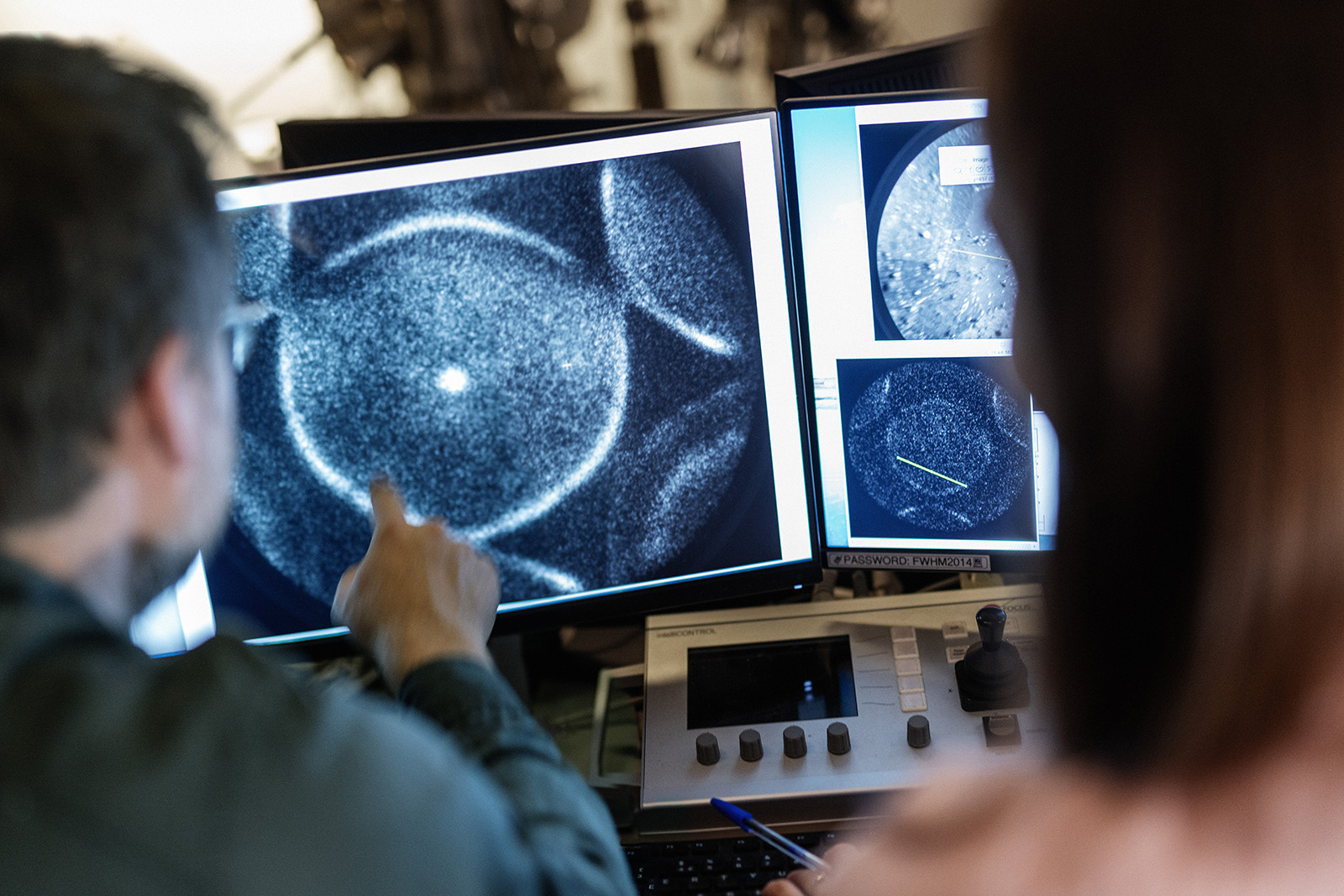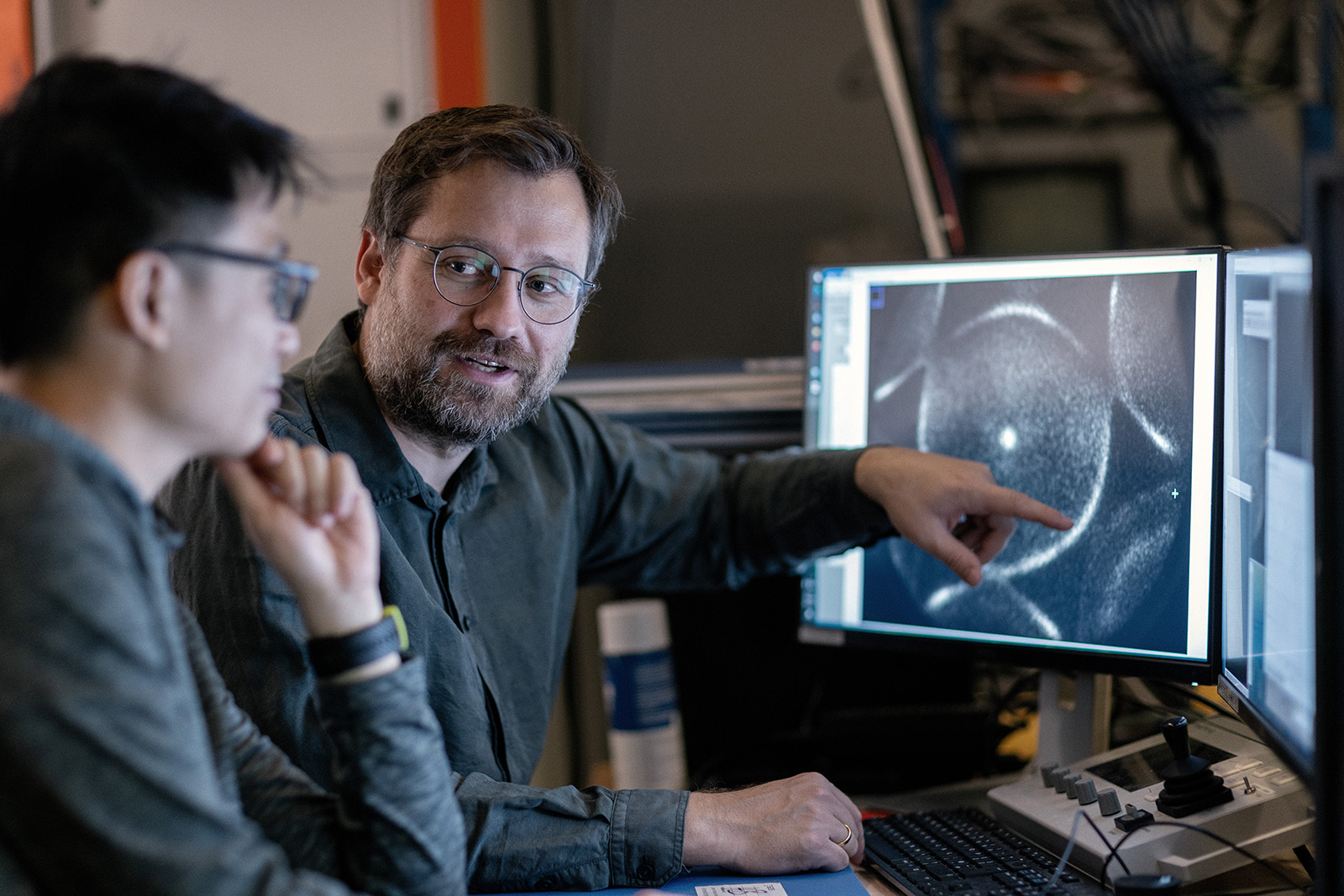Spin-ARPES Lab
Spin-ARPES Lab

Theme and goal
The recent decades have seen the rise of modern information and communication technologies, largely based on the use of semiconductors in transistors and integrated electronic circuits. This era is sometimes referred to as the "silicon age“, highlighting the importance of the material silicon in this context. The properties of silicon are well understood on fundamental grounds. However, there are classes of materials whose physical behaviour is vastly more complex and less understood, including superconductors, magnets, and topological systems. In these "quantum materials“ the quantum-mechanical nature of the electrons and their mutual interactions come to the forefront and remain manifest over a wider range of energy and length scales. Researchers envision that proper control of these quantum effects and resolving some of their puzzles could enable new technologies beyond the silicon age. Understanding the physics of quantum materials is challenging, however, and involves the development and application of sophisticated experimental and theoretical techniques.
We use a method called spin- and angle-resolved photoelectron spectroscopy (spin-ARPES) to investigate magnetic and topological materials. Spin-ARPES is based on the photoelectric effect, i.e. the excitation of photoelectrons at a material surface upon irradiation with monochromatic light. The effect has long been known and constitutes one of the key observations that paved the way from classical electrodynamics to quantum mechanics. Use of modern spectrometers and light sources allows us to study the spatial, angular and spin distributions of photoemitted electrons as well as their dependence on energy and polarization of the exciting light, providing detailed information about electronic and magnetic properties. With this, our goal is to contribute to the discovery and to a refined microscopic understanding of quantum states in new and complex materials.
Key questions
Our primary focus lies on the investigation of electronic states with so-called topological properties which give rise to unusual spin textures in momentum space. We are interested in how topological properties and spin textures are related to or modified by ferromagnetic or antiferromagnetic order, specific crystalline symmetries, quantum confinement in atomically thin crystals and proximity coupling in heterostructures. Spin-ARPES allow us to directly address these points experimentally. Our experiments are performed in the laboratory at NTNU and at international synchrotron radiation facilities, such as PETRA III at DESY (Hamburg).






